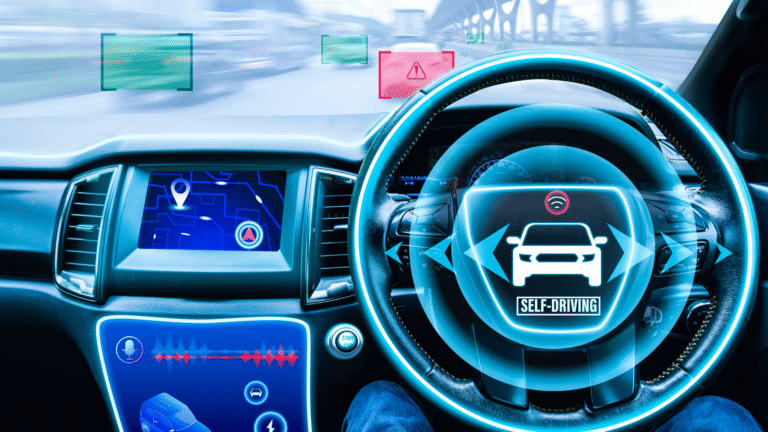The dream of fully autonomous cars has long captured the imagination of drivers and tech enthusiasts alike. With electric vehicles (EVs) at the forefront of automotive innovation, many Australians are wondering: just how close are we to self-driving EVs on our roads?
From smart sensors to AI-powered software, autonomous technology is evolving rapidly—but the road to full autonomy is still under construction. In this article, we’ll explore where the industry stands today, how EVs are paving the way, and what autonomous driving means for everyday Australian drivers.
—
Table of Contents
- What Is Autonomous Driving?
- The 6 Levels of Vehicle Autonomy Explained
- How EVs Are Enabling the Future of Self-Driving Cars
- Autonomous Driving Progress: Global vs. Australian Context
- Key Challenges to Full Autonomy in Australia
- FAQs
- Conclusion
—
1. What Is Autonomous Driving?
Autonomous driving refers to the ability of a vehicle to operate with minimal or no human input by using a combination of sensors, cameras, radar, GPS, and artificial intelligence (AI).
These systems allow the car to “see” its surroundings, make decisions in real-time, and navigate safely—ideally without needing a driver behind the wheel.
While many EVs today include semi-autonomous features (like lane assist and adaptive cruise control), full self-driving capabilities remain a work-in-progress.
—
2. The 6 Levels of Vehicle Autonomy Explained
The Society of Automotive Engineers (SAE) defines six levels of driving automation:
| Level | Description | Human Involvement |
|---|---|---|
| 0 | No Automation | Full driver control |
| 1 | Driver Assistance (e.g. cruise control) | Driver monitors and controls |
| 2 | Partial Automation (e.g. lane keep + ACC) | Driver supervises actively |
| 3 | Conditional Automation | Driver may disengage briefly |
| 4 | High Automation (self-driving in geofenced areas) | No driver needed in some conditions |
| 5 | Full Automation (any road, any time) | No driver required at all |
Most EVs on Australian roads are at Level 2, while Level 3 and 4 systems are being piloted in other countries.
—
3. How EVs Are Enabling the Future of Self-Driving Cars
Electric vehicles are uniquely positioned to accelerate the shift toward autonomy:
🔋 Digital Platforms
EVs are inherently more software-centric than traditional petrol vehicles, making them easier to integrate with autonomous systems.
⚡ High-Voltage Architecture
EVs often use advanced battery and sensor platforms that support power-hungry autonomy systems like LIDAR and AI processors.
🔄 Over-the-Air (OTA) Updates
EVs like those from Tesla, Polestar, and BYD receive regular software updates that can add or improve self-driving features remotely.
📡 Data Collection
Electric fleets collect massive driving datasets, crucial for training autonomous AI systems.
In short, EVs are not just cleaner—they’re smarter and more adaptable, forming the foundation for next-gen mobility.
—
4. Autonomous Driving Progress: Global vs. Australian Context
🗺️ Global Highlights:
- Tesla’s Full Self-Driving (FSD) Beta is in advanced trials across the US, with Level 2+ capabilities.
- Waymo (Alphabet/Google) operates driverless robotaxis in select US cities (Level 4).
- Mercedes-Benz received approval in Germany and the US for Level 3 “Drive Pilot.”
🇦🇺 Australia:
- No Level 3+ autonomy is currently legal on Australian roads.
- Trials are underway in controlled environments (e.g., automated shuttle buses in Victoria and South Australia).
- The National Transport Commission is working on autonomous vehicle regulations and safety standards.
- Tesla, Polestar, and Volvo offer Level 2 driver-assistance features (e.g. Autopilot, Pilot Assist, and ProPilot).
For now, Australian drivers can enjoy advanced semi-autonomous features—but full driverless experiences are still a few years away.
—
5. Key Challenges to Full Autonomy in Australia
🧭 Legal & Regulatory Barriers
Autonomous vehicles need updated laws, insurance models, and road safety rules before they can operate legally on public roads.
📶 Infrastructure Gaps
Reliable 5G coverage, smart traffic systems, and vehicle-to-infrastructure (V2I) technology are essential for autonomy to function properly.
🧠 AI Complexity
Self-driving software must safely handle unpredictable road users, weather conditions, and signage—especially in regional Australia.
🚧 Public Trust
Aussie drivers are still sceptical about giving up full control. Building trust in AI decisions will take time and education.
—
FAQs
🤖 Can I buy a self-driving car in Australia today?
No fully autonomous cars (Level 3+) are legal or available for consumer use in Australia. Most EVs offer advanced driver-assist features (Level 2).
🚗 Which EVs offer the most autonomous features?
Tesla’s Autopilot, Hyundai’s Highway Driving Assist, and Polestar’s Pilot Assist are among the most advanced systems currently on Australian roads.
📜 When will autonomous vehicles be legal in Australia?
Regulatory frameworks are being developed, but widespread approval for Level 3+ vehicles is unlikely before 2027–2030.
⚡ Why are EVs leading in autonomous tech?
Their digital-first architecture, software integration, and frequent OTA updates make them ideal platforms for self-driving systems.
—
Conclusion
Autonomous driving is no longer science fiction—it’s rapidly evolving reality. While Australia is still in the early stages of adopting this technology, EVs are already leading the way with semi-autonomous features and intelligent systems.
🚙 For forward-thinking Australian drivers, choosing an EV today is not just about going electric—it’s about getting ready for the self-driving future.
—
Curious about self-driving electric cars in Australia? Learn how close we are to autonomous driving, what EVs offer today, and what’s coming next.
